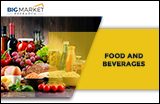
Global Gluten-Free Condiments, Seasonings & Spreads Market
- MAR2979306
- 210 Pages
- May 2018
- Food and Beverages
Market Dynamics
The market for gluten-free foods and beverages has shown a significant change in the recent past from being considered extremely niche products to becoming mainstream products. People around the world have started consuming gluten-free products, not only because of being diagnosed with celiac disease but also because of a general perception of maintaining better health. A current trend showing a rise in consumption of free-from-gluten-products consumption has given further impetus to the gluten-free foods & beverages segment.
A consumer survey shows that XX% of adults are buying or consuming food products tagged as gluten-free, up from XX% in September 20XX. Moreover, the conviction that gluten-free products are generally healthier is the top motivation for consumers of these products. Increasing diagnoses of celiac disease and food allergies; growing awareness of these ailments among patients, and a trend that has friends and family members eating gluten-free to support loved ones are among the factors stimulating continuing expansion in this market.
Market Segmentation
Gluten-free products have the target segments ranging from the ageing population to those whose health has become a primary concern. Moreover, growth from millennial, improvement in marketing activities, and improved distribution channels have created new target markets. The global gluten-free food market is expected to create a huge market in the near future, attributed to factors such as the promotion of health and wellness, increase in demand from millennials, improvement in marketing activities, a rise in awareness about celiac disease, and other gluten allergies. However, one of the major bottlenecks of the gluten-free products market is a lack of awareness in developing regions such as Latin America and Asia- Pacific and ignorance about the difference between allergy and intolerance.
Geographical Analysis
Geographically, the market is based in Europe, North America, Asia-Pacific, and LAMEA. Europe is seen to be generating the highest revenue whereas North America is expected to be growing at the fastest growth rate possible during the forecast period. The market for gluten-free foods in the U.S. and Europe is fairly well developed due to the existence of significant awareness about the need to limit gluten-intake in diets in order to control the risks of celiac disease. The U.S. market for gluten-free foods and beverages has continued to grow even faster than anticipated, reaching $X.X billion in 20XX, with a compound annual growth rate of XX% over the 20XX-20XX period.
Key Players
The major players in the global Gluten-Free Products market are Boulder Brands, Dr. Schaer AG/SPA, Enjoy Life Natural, General Mills Inc, The Hain Celestial Group, Kraft Heinz, Hero Group AG, Kelkin Ltd, Raisio Plc, Kellogg Company, Big Oz Industries and Dominos Pizza.
Report Contents:
> Market segments
> Market Drivers, Restraints and Opportunities
> Market Size & Forecast 2016 to 2022
> Supply & Demand Value Chain
> Market - Current Trends
> Competition & Major Companies
> Technology and R&D Status
> Porters Five Force Analysis
> Strategic and Critical Success Factor Analysis of Key Players
Regional Analysis:
> North America
>> US and Canada
> Latin America
>> Mexico, Brazil, Argentina and Rest of Latin America
> Western Europe
>> EU5 (Germany, France, Italy, Spain, U.K.)
>> Nordic Countries (Denmark, Finland, Norway, and Sweden)
>> Benelux (Belgium, The Netherlands, and Luxembourg)
>> Rest of Western Europe
> Eastern Europe
>> Russia
>> Poland
>> Rest of Eastern Europe
> Asia Pacific
>> China
>> India
>> Japan
>> Australia and New Zealand
>> Rest of Asia Pacific
> Middle East and Africa
>> GCC countries (Saudi Arabia, Oman, Qatar, Bahrain, UAE and Kuwait)
>> South Africa
>> North Africa
>> Rest of Middle East and Africa
This report is an elaborate aggregation of primary inputs from industry experts and participants across the supply chain. It provides details on market segmentation which is derived from several product mapping exercises, macroeconomic parameters and other qualitative and quantitative insights. The impact of all such factors is delivered across multiple market segments and geographies.
Report Highlights:
> Detailed Historical Overview (Market Origins, Product Launch Timeline, etc.)
> Consumer and Pricing Analysis
> Market dynamics of the industry
> Market Segmentation
> Estimated Market Sizing in terms of volume and value
> Recent trends in Market and impact
> Research Status and Technology Overview
> Extensive Industry Structure Coverage
Similar Reports
Driven by improving living standards of people and a fast-growing macro-economy, China has remained the largest beer-consuming country worldwide for the 12th consecutive year since 2003, and the largest beer-producing nation globally in the past years. This report focuses on systematic evaluation and analysis of Internal Risks (arising within the industry development itself) and External Risks (ar...
- Publish Date: November 26, 2014
- $800
Summary Based on products type, the report describes major products type share of regional market. Products mentioned as follows: By Type Microparticulated Protein Modified Whey Protein Concentrate Others Based on region, the report describes major regions market by vendor, products and application. Regions mentioned as follows: North America Europe Asia RoW Based on application, the repor...
- Publish Date: March 1, 2017
- $840
Summary The global Oat Protein market is estimated to reach 1.4 K MT in 2017. The objective of report is to define, segment, and project the market on the basis of type, application, and region, and to describe the content about the factors influencing market dynamics, policy, economic, technology and market entry etc. Based on products type, the report describes major products type share of regio...
- Publish Date: April 15, 2017
- $840